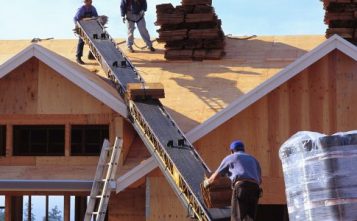Multi-family housing construction drove the growth in housing starts in March, according to the latest data release by the U.S. Census Bureau and the U.S. Department of Housing and Urban Development.
Total starts were 11% higher than in March 2017, at a seasonally adjusted annual rate. Single-family starts fell in March but the number of permits for new houses is high and indicates future growth.
Existing-home sales grew for the second consecutive month in March. While demand for homes is up in the current economic environment, low supply and rising home prices hold back many would-be buyers, according to the National Association of Realtors. Moulding and trim market
Engineered wood and plastic moulding and trim are expected to gain market share in the U.S. over the next four years, but wood will remain the main material. Demand for wood moulding and trim is projected to increase 3.7% annually to US$5.5 billion in 2022, according to a new Freedonia market study (Moulding and Trim in the US by Material, Product, Market and Region, 7th Edition).
Wood will account for more than half of all moulding and trim sales in 2022, despite having the slowest growth rate of all materials. Engineered wood and plastic will grow at a faster rate because of cost and durability considerations.
New home construction and renovation, especially in single-family houses, as well as non-residential construction (office and institutional) will drive the growth in moulding demand. T he main market for wood is in residential construction and renovation, while commercial construction uses mostly metal. Office and institutional buildings use a range of materials for moulding and trim, including wood and engineered wood.






Leave a Reply